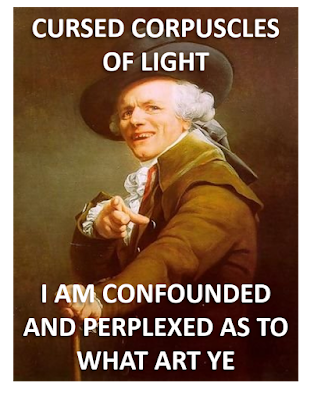The year 2017 is very nearly over, and it is time to look back at what news the year brought in photonics. I will be covering here some of the things I found the most interesting. First of all, being a Finnish citizen, I must mention that Finland turned 100 years old on 6.12.2017! To celebrate 100 years of independence, there were several events all over the country and
abroad as well. Company called Valoparta made the biggest art installation of all time, lighting up the whole
Saana fell (a type of mountain in Lapland).
This is the first art installation of its kind, with 2.5 million square meters of illuminated area and it was visible from three countries, Finland, Sweden and Norway. And to top it all off, we had the good fortune of seeing northern lights above Saana at the time of the installation. Truly spectacular!
Hard science
Nobel prize
The Nobel prize in physics went to the LIGO interferometer for detecting gravitational waves. There was much hype about the detection, but the details of the setup were often neglected. The interferometer that the LIGO collaboration used is the largest optical setup ever made, with the interferometers arms having optical path lengths of 4 km, and they are aligned up to a precision of tens of micrometers! Furthermore, once the beam of light enters the arm, it is subject to a Fabry-Pérot type cavity, where the beam bounces back and forth about 280 times, increasing the total optical path length in one arm to around 1120 km. Not to mention that all this happens in a vacuum chamber, a very impressive device indeed.
Super resolution microscopy via correlations
Theoretically predicted a few years back, and now experimentally confirmed; it is possible to increase the resolution of optical microscopes by tuning the coherence of the illuminating light. In principle, this can decrease the smallest discernible feature size by a factor of 0.17, allowing resolutions of a few tens of nanometers with visible light. The exciting thing about this is that it works with any conventional optical microscope, you just need to change the light source!
Tuning photon statistics
It was found that it is actually possible to tune the photon statistics of light by interfering two beams in a disordered medium. It has been known for a while that disordered media can change the photon statistics of incident light, but this is the first experimental proof of a scheme where the statistics are controlled by varying the relative phase between the interfering beams. This can lead to controlled quantum sources, which is the most stable light imaginable.
Optical topological insulators
Topological insultors have received a great deal of attention in the past few years, and now it has been shown that these structures can be realized also in three dimensional optical materials. Such optical topological insulators can allow for lossless light guiding inside complex three dimensional media, which is necessary, for example, in quantum computers (we don't want dem bits to go missing, now do we?)
Nanophotonics with organic molecules
Traditionally, to achieve strong confinement and field enhancement at the nanoscale, researchers employ metallic structures that excite
plasmons. These types of devices are necessary for the development of the internet, for example. Now we have a second way of achieving the required confinement and field enhancement, by employing
organic molecules. Researchers found that the absorption peak of the molecules is associated with a change in its permittivity, mimicking metals. If developed further, this research could lead to self-assembling nanophotonics.
Business
Growth of the photonics sector
The growth rate of European photonics production is more than 3.5 times higher than the growth rate of the EU GDP, with no stopping in sight. According to recent projections, in the year 2020 ten percent of all jobs in Europe will be dependent on photonics. As it was stated in the international year of light proceedings in 2015, the 21st century will depend on photonics as much as the previous century depended on electronics.
Europe takes second place in global photonics markets
In 2015, China took the place of global market leader with a 26.6 percent share of production.
Europe increased its share to 15.5 percent and became the second-largest photonics producer in the world. North America has been recovering since 2011 and has increased its market share to 13.6 percent in recent years. The market share positions within Europe only shifted slightly. Germany kept its top position with around 41 percent share of production.
I'm sure that the year had also other important science news, but I personally found these to be particularly interesting. Anyway, I hope the year 2017 served you well and that the next one will be even better!



Comments
Post a Comment